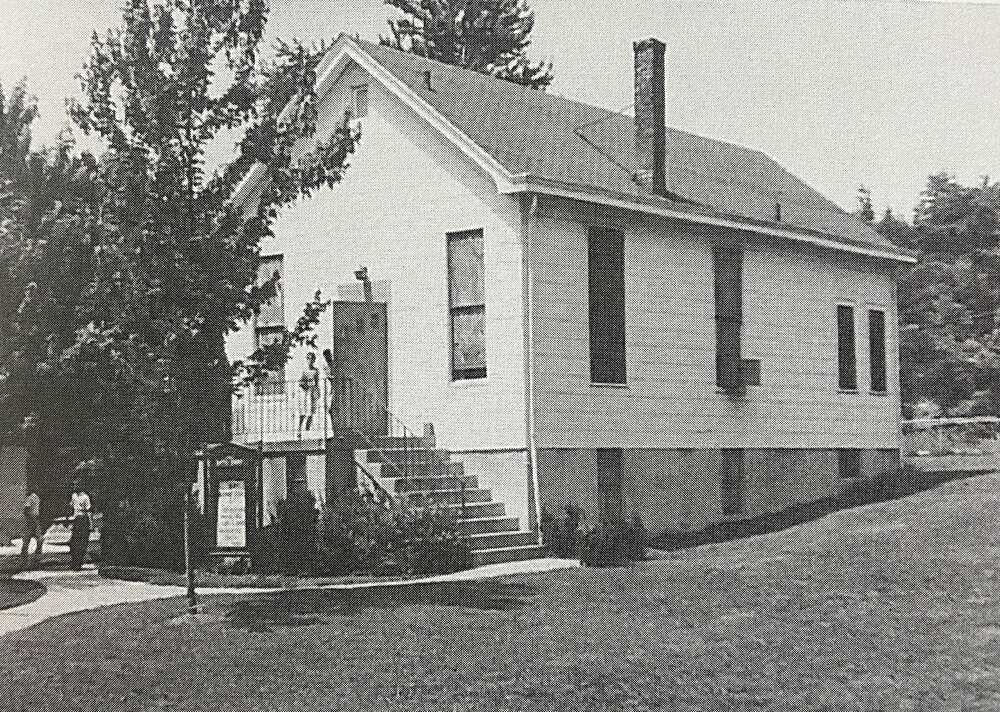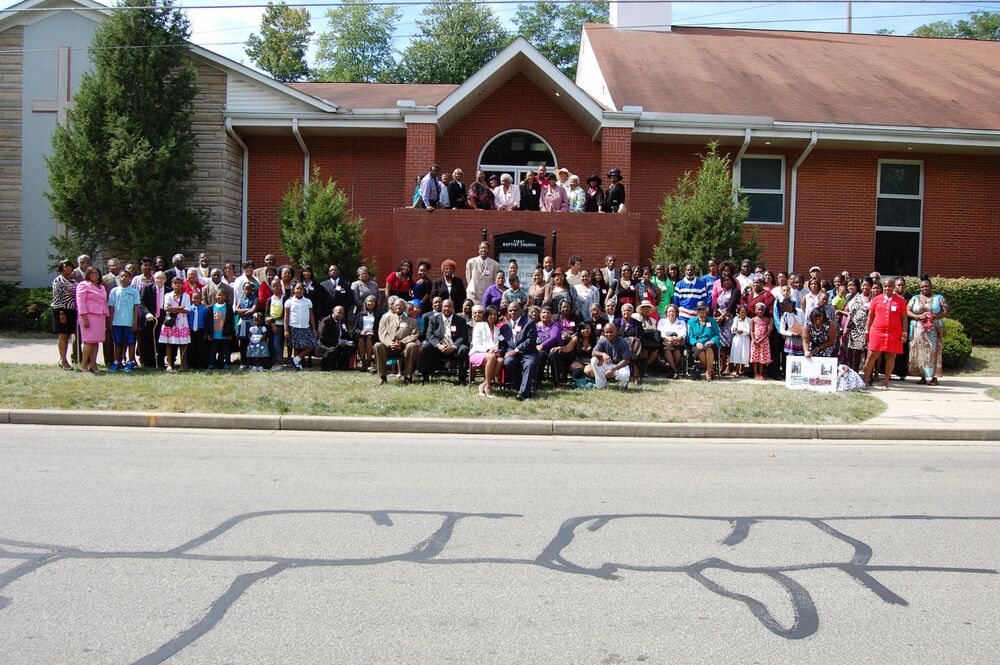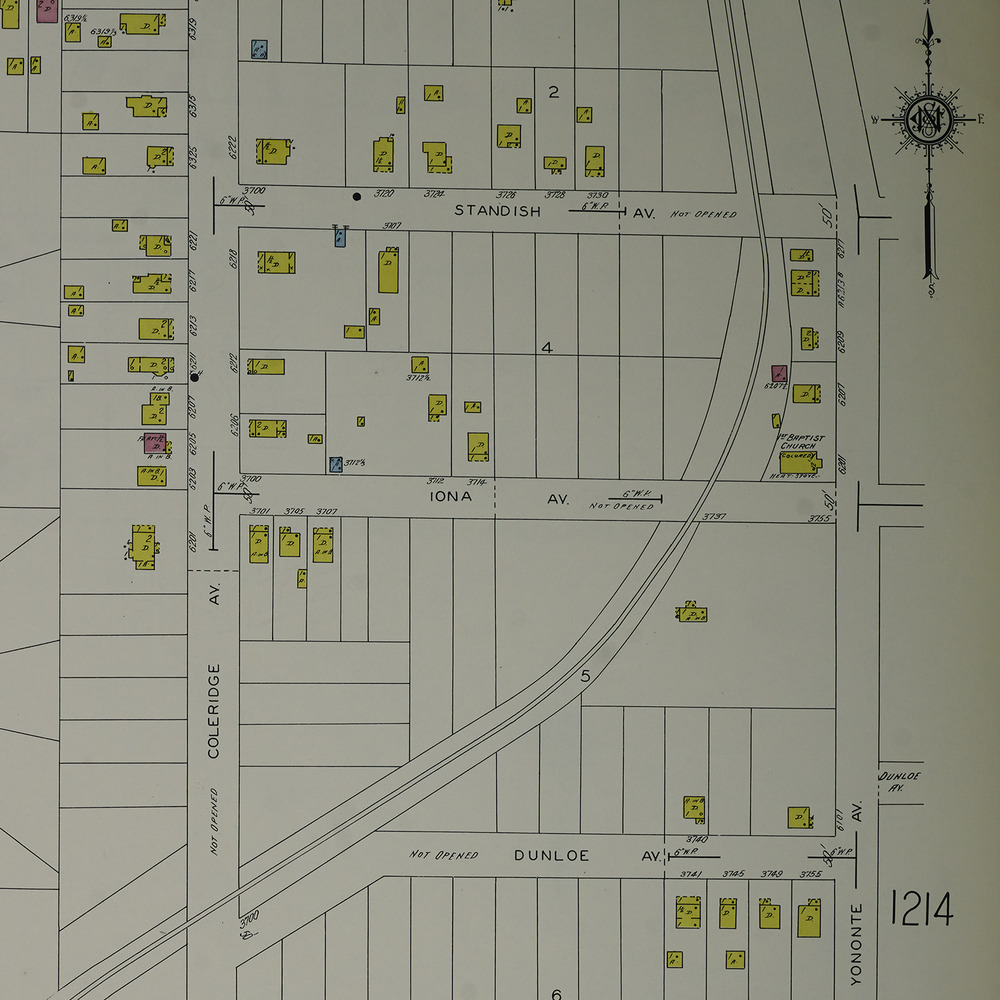First Baptist Church of Kennedy Heights
A Century-Old Community Anchor

After the Civil War, area development increasingly spread to Cincinnati's hilltops and beyond, encouraged and enabled by new railroad lines. The northeast region, served by the Cincinnati Northern Railroad starting in 1882, seemed particularly attractive, and Lewis Kennedy, the descendant of a pioneer Cincinnati family, was one of the first developers in this area.
In the late 1880s, Kennedy filed plans to develop the first subdivision on land he had inherited between Pleasant Ridge and Silverton. He then organized the Kennedy Heights Loan & Building Association, purchasing a large farm to create an ideal suburban development, initially envisioned as a summer resort community. The marketing materials emphasized the ease of the 30-minute commute to and from downtown Cincinnati, and praised the area as "one of the finest of Cincinnati's suburbs, with excellent streets, sidewalks and drives, and beautiful homes."
Kennedy then organized the Belmont Land Association along Montgomery Pike opposite his first tract. In the late 1890s, the Euclid Land Association, organized by Robert J. Cresap, a land developer in nearby Silverton, surveyed land on either side of the C. L. & N. tracks between the Kennedy station and Silverton. At 50 feet wide, these lots were considered narrow for the area.
By 1910, Kennedy Heights was home to 48 African American residents in nine families. The increase in Black population occurred in part because, in 1906, the Euclid Land Association began selling to Black families the low-lying lots on Yononte Ave. near the train tracks.
First Baptist Church was established in 1914. A group of Black worshippers initially started meeting in the home of Mr. and Mrs. George McCray at 6219 Yononte Ave. In 1914, the fledgling congregation bought land on the northwest corner of Iona and Yononte Ave. from church members, Mr. and Mrs. William Turner, for $100. Yononte Ave. was later renamed Red Bank Rd.
The first pastor was Reverend Charles Coleman, who traveled from the Black community in Hazelwood in Blue Ash to serve this congregation.
As was fairly common at the time, the new congregation built its church in phases, building the basement and roofing it in order to have a space for church services and Sunday school, while continuing to raise funds to complete construction.
According to James Cebula in Kennedy Heights: A Fragmented Hilltop Suburb, "The Deerfield Creek ran along the railroad bed, and behind the church it cut under the tracks. Here a deep pool developed and conveniently provided a natural baptismal font."
At approximately 30 families in 1930, the group was initially small, with some congregants traveling from nearby communities. During this time, "most black families in Kennedy Heights lived close to First Baptist Church in a racially mixed area of the community, while the rest of the neighborhood was occupied entirely by whites."
In 1966, the now larger, more established congregation replaced the original building with a new one. An addition was completed in 1992. The congregation, now a century-old community anchor, is currently led by pastor Robert W. Harper.
Images


